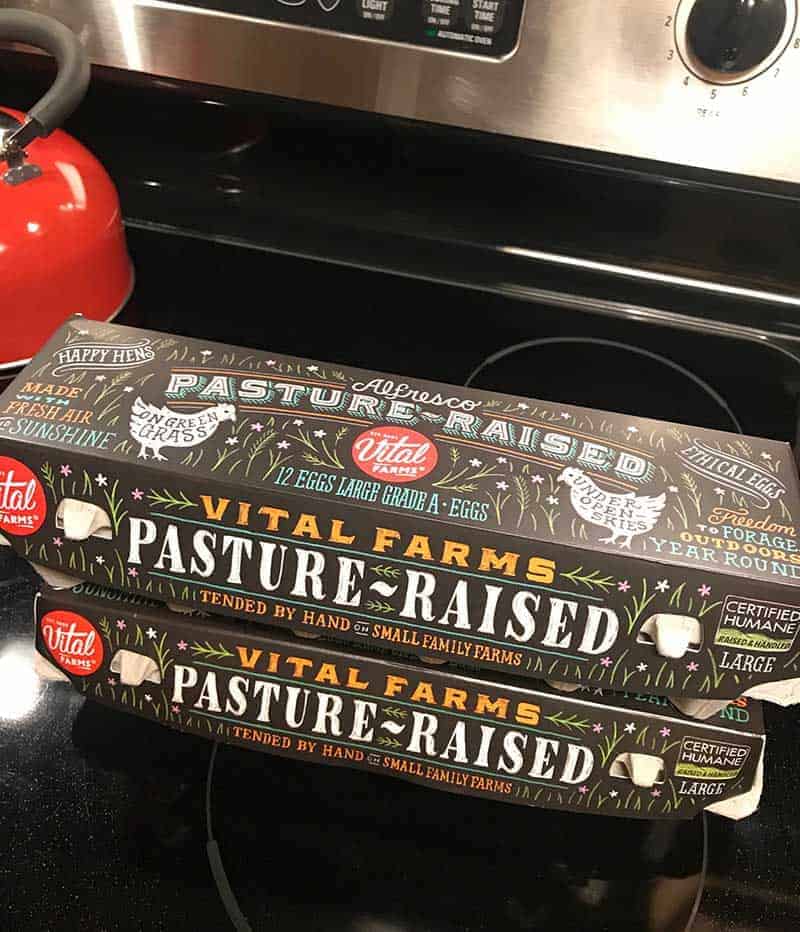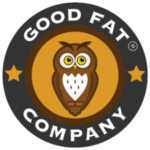My family went to Colorado last week to ski the sunny slopes for three days, and as a Crazy Egg Family, a Breakfast-will-make-or-break-your-day Family, before arriving at our temporary residence, we had to go to the grocery store, and we had to get eggs. But we didn’t buy just any eggs, no, we didn’t get plain ole grade AA, nor did we get cage free or free ranging or disco-dancing or strut-clucking eggs. Nope, we got the best eggs out there—we purchased Vital Farms Pasture-Raised Eggs!
 We flew in on Monday, skied Tuesday, Wednesday, and Thursday, and flew out on Friday. On the highway, driving from the airport to the town of Frisco where we were staying, we passed through towns that had maintained their single-story, wood and faded-paint aesthetic from many years past. Some small towns appeared abandoned or in disrepair. Others felt alive, habitated by those making a living in the valleys at an elevation of 8,000 feet, between snowy mountains ranging from 10,000 feet tall to about 14,000 feet tall.
We flew in on Monday, skied Tuesday, Wednesday, and Thursday, and flew out on Friday. On the highway, driving from the airport to the town of Frisco where we were staying, we passed through towns that had maintained their single-story, wood and faded-paint aesthetic from many years past. Some small towns appeared abandoned or in disrepair. Others felt alive, habitated by those making a living in the valleys at an elevation of 8,000 feet, between snowy mountains ranging from 10,000 feet tall to about 14,000 feet tall.
We passed Idaho Springs, a town alongside Highway 70, and near to it, a football stadium that boasted their mascot: The Gold Diggers. Yes, what we were witnessing on our journey were towns originally settled around 1859 during the Colorado Gold Rush (and a high school that in later years took advantage of that rich history). Once we realized what we were seeing, we began to spot it everywhere: indications that men had traveled there to strike a fortune in the valleys of the Rocky Mountains, evidenced by abandoned mine buildings at the foothills of the steep stone giants.
The sights captivated us in a nostalgic trance, all of us wondering: what would it have been like to travel West back when roads either didn’t exist, or were at best unpaved, when you had to find your own food and sleep in a wagon or tent? When only uncharted lands were sprawled before you, naked with fresh snow and wild animals, and all you had as sustenance was hope that there might be something in those mountains worth settling for? My brother, pondering such a brutal experience and commenting on our comparative ease of travel, said, “I’m sure as h*ll glad I wasn’t there!”
As a family of four, fresh off a flight from Detroit, we had it quite easy on our paved highway trip from the Denver airport to little Frisco, Colorado. After getting fit for skis, we made our next stop: Whole Foods.
We knew we had to account for four mornings of egg-eating. Given that the four of us are highly experienced egg-consumers, we knew how many we’d each want:
Mom: 3 eggs per morning * 4 mornings +
Dad: 3 eggs per morning * 4 mornings +
Me: 3 eggs per morning * 4 mornings +
Brother: 6 eggs per morning * 4 mornings
= 60 eggs = 5 cartons
That’s a lot of eggs!
And here’s what every health-conscious and money-conscious person knows: the good eggs are expensive.
Pasture Raised eggs range in price from $5.00 a carton to $7.00, depending on their brand or source and the various classifications (we’ll get into this further down). With that kind of bill, and especially if you eat like my brother, you might be thinking you ought to be panning for gold for the amount of money you need to buy a carton of Organic Pasture Raised Eggs.
However, let’s return to our history lesson: I mentioned the Colorado “59ers” who came for the Colorado Gold Rush, or Pike’s Peak Gold Rush. Back up ten years from that and you’ll land in California during the California Gold Rush in 1949, when 300,000 “49ers” came to California from the United States and abroad to get a taste for wealth.
They may have desired a taste of wealth, but what they were given was a taste of really expensive eggs. Or, in reality, really expensive everything. A dozen eggs in Gold Rush California would cost you today’s equivalent of $90. That’s $7.50 an egg. And here’s some comparative math for ya: that’s more for one egg than the cost of an entire carton of Vital Farms Organic Pasture Raised Eggs. So, count your lucky chickens you weren’t panning for gold and shelling out $56 dollars in today’s money for a piece of bread and butter, or $3,000 for a pair of boots.¹
But enough with the jokes—are these expensive Pasture Raised eggs really worth it?
First off, if you aren’t familiar with the various classifications of eggs (caged, cage-free, brown vs. white, free range, etc.) and what exactly each label means (since we all know the egg cartons themselves won’t give away any secrets), take a quick look at this article: How to Shop for Eggs – organic? cage free? free range? brown vs. white? Then come back.
What does Pasture-Raised mean?
It means that each hen gets 108 square feet of open pasture to roam, where she can chomp on sweet green grass and devour scrumptious insects. The hens (Vitals Farms endearingly refers to them as “our girls”) see the sun, aren’t given growth hormones or antibiotics, and spend their day wherever they like: in their barn or through the open doors to green freedom. The pastures are regularly rotated, both to provide the hens fresh grass and to promote regrowth on already foraged grounds.
There are three types of Vital Farms Eggs:
(Though the hens’ diets are supplemented with varying levels of quality feed, all three types of eggs offer the most important benefit, which is free foraging for all hens on pesticide-free pastures):
- Vital Farms ‘Alfresco’ Eggs: Pasture Raised, with conventionally farmed feed
- Vital Farms Non-GMO: Pasture Raised, with Non-GMO feed
- Vital Farms Organic: Pasture Raised, with USDA Certified Organic feed
(want more details? check out Vital Farm’s website)

Blue Sky Basin, Vail Colorado
Some time ago I had a friend who, looking over my shoulder, commented on the eggs I was frying. He said, “did you ever notice the healthier eggs have such a darker yolk? These look just like the eggs we used to have when my family raised chickens.” And it’s true—Pasture Raised eggs have a deep, orange hue, and many agree their taste is richer and creamier. And, unsurprisingly, they look like the eggs from family-raised chickens because they’re treated as chickens should be treated: humanely and cruelty free! Their brown shells even look a bit like gold, some people have said (…it was me… I said that).
What causes a darker yolk? More nutrients, including more vitamins and omega 3s. (Want more in depth info about the jam-packed, self-packaged bomb of nutrients that is a Pasture Raised egg? The website has all the info you need plus more, including cute and informative interactive graphics and images).
The Bottom Line: the eggs are worth the extra cost. Furthermore, by spending your money this way, you are voting with your dollar for A) the grocery store to continue to supply the high-quality eggs, and B) happy happy chickens that aren’t cannibalistic (yes, that’s what happens in less humane environments) and that actually get out in the sun! (My family had lunch atop a mountain over Vail’s Blue Sky Basin and witnessed the sun beating down on a group of jacket-less hooligans who were playing croquet—yes, they’d brought their own croquet set to the Back Bowls. Anyway…) I know the benefits of a healthy dose sunshine, so do you, and so do the hens! Happy chickens make delicious eggs and a brighter, healthier world.
You could say these eggs are truly worth their weight in gold *winky-face.*

Ms. Julia Dooley
Julia Dooley
- Boggan, Steve. “Gold Rush California Was Much More Expensive Than Today’s Tech-Boom California.” Smithsonian.com, Sept. 30, 2015, smithsonianmag.com/history/gold-rush-california-was-much-more-expensive-todays-dot-com-boom-california-180956788/.


